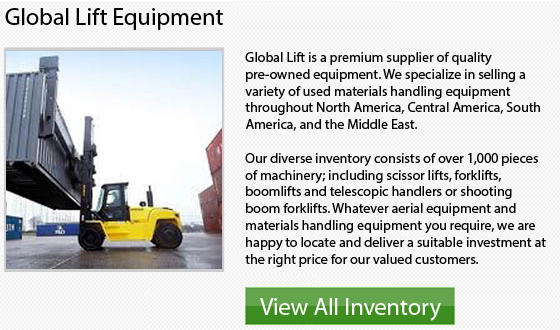
The following add-ons are helpful for narrow aisle lift trucks:
Side shift: The side shift option permits the lateral movement of the load without having to move the truck. This allows loads to be precisely placed.
Tilt mast: The optional tilt mast enables the forks to shift both forwards and backwards. This is perfect in cases where loads aren't entirely level. To gain more stability when transporting a truck that is loaded, the mast can be tilted back.
Extendable forks: Extendable forks help the reach of a forklift to allow for the stacking of pallets one in front of the other. This is known as double deep loading.
Operator platforms: Several NA forklifts have operator platforms which could raise and lower the operator while at the same time raising and lowering the forklifts forks. This offers utmost control and visibility while dealing with loads at heights of 6 to 9 meters.
Forklift on a Ramp
Forklift operators should be well trained on the machines. They must be tested and qualified or certified. It is vital for anyone using a forklift to be knowledgeable regarding safety problems and rules. Operators must understand how to adjust in cases where the load weight alters the center of gravity or on uneven surfaces. Safety measures include the safe operation of a forklift on a ramp, that is a frequent happening as the driver will usually need to drive up and down ramps to load and unload containers.
Guidelines for Utilizing a Forklift on a Ramp
1 While approaching and driving up and down the ramp, drive at slow speeds. The risk of accidents is higher while driving fast because this can upset the machine's center of gravity.
2 When not carrying a load, drive the forklift in reverse while moving up an incline on a ramp.
3 When moving down an incline on a ramp with no load, drive forward.
4 Tilt the forks slightly back to shift the center of the load to the machine's front, when moving down or up a ramp when carrying a load.
5 Drive forward up a ramp when carrying a load in order to make the load more stable.